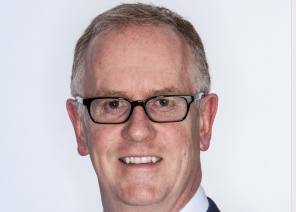

Last year the team enjoyed healthy returns as a result of heavy exposure to cyclical stocks in mining, UK housebuilders and US high yield.
Fund manager Andrew Cole said all three positions had been removed and replaced with lower-valued, more diversified assets as a result.
Mr Cole, who runs the £139m FP Pictet Multi Asset Portfolio with colleagues Percival Stanion and Shaniel Ramjee, said: “Our diversified approach to portfolio construction saw both sides win last year.
“If you buy cheap diversifiers, they help. And that’s what [UK] mining stocks did.”
The FTSE All-Share Mining index jumped 106 per cent in 2016 compared with 17 per cent for its parent benchmark, data from FE Analytics shows. US high yield returned 17.5 per cent in dollar terms, while UK housebuilders gained 26 per cent following the EU referendum.
The manager said the team rotated away from UK miners and housebuilders into energy, global financial stocks and Japanese and emerging market equities. US high yield has been replaced by emerging market debt.
“We were procyclical and remain so,” he said.
“We rotated out of mining, in part because in the UK they were major beneficiaries of the weaker pound. And we think the big story for the pound weakening is over.
“Last year our model suggested US high yield would outperform equities, and that’s how it panned out. But this year [the asset class] is just the wrong side of fair value after an incredible run, so we reduced exposure.”
The multi-asset portfolio has returned 9 per cent since the trio launched the Pictet fund in July 2015 following their departure from Barings.
However, all of that upside came in 2016, with the strategy recouping its earlier losses as of July.
Mr Cole said the market had caught up with the team’s optimistic outlook on global growth and corporate earnings – meaning it was safe to remain very bullish on equities and bearish on traditional fixed income.
The manager said: “You’ll want to own stocks. The portfolio you would have wanted in the past five years is plenty of credit and high yield, and bond proxies. To my mind that is no longer a diversified portfolio.
“We have an equity portfolio that is very cyclical and we do a good job screening out anything that looks like a bond.”
He added: “We are prepared to own some US Treasuries as we can see some relative value, as well as making sure we have diversification in case we’re wrong about the cycle.”
The Pictet strategy uses a combination of direct investing, in-house funds and third-party managers.
But Mr Cole said recent and current equity exposure had been done either directly, or via exchange-traded funds as the team could not find a third-party vehicle with the right exposure.
“We’re heading into a more benign and stable growth environment,” he added.
“We haven’t used a stockpicker in a while, but this is the sort of environment where a concentrated growth-orientated portfolio should have a tailwind, and we might utilise one.”



